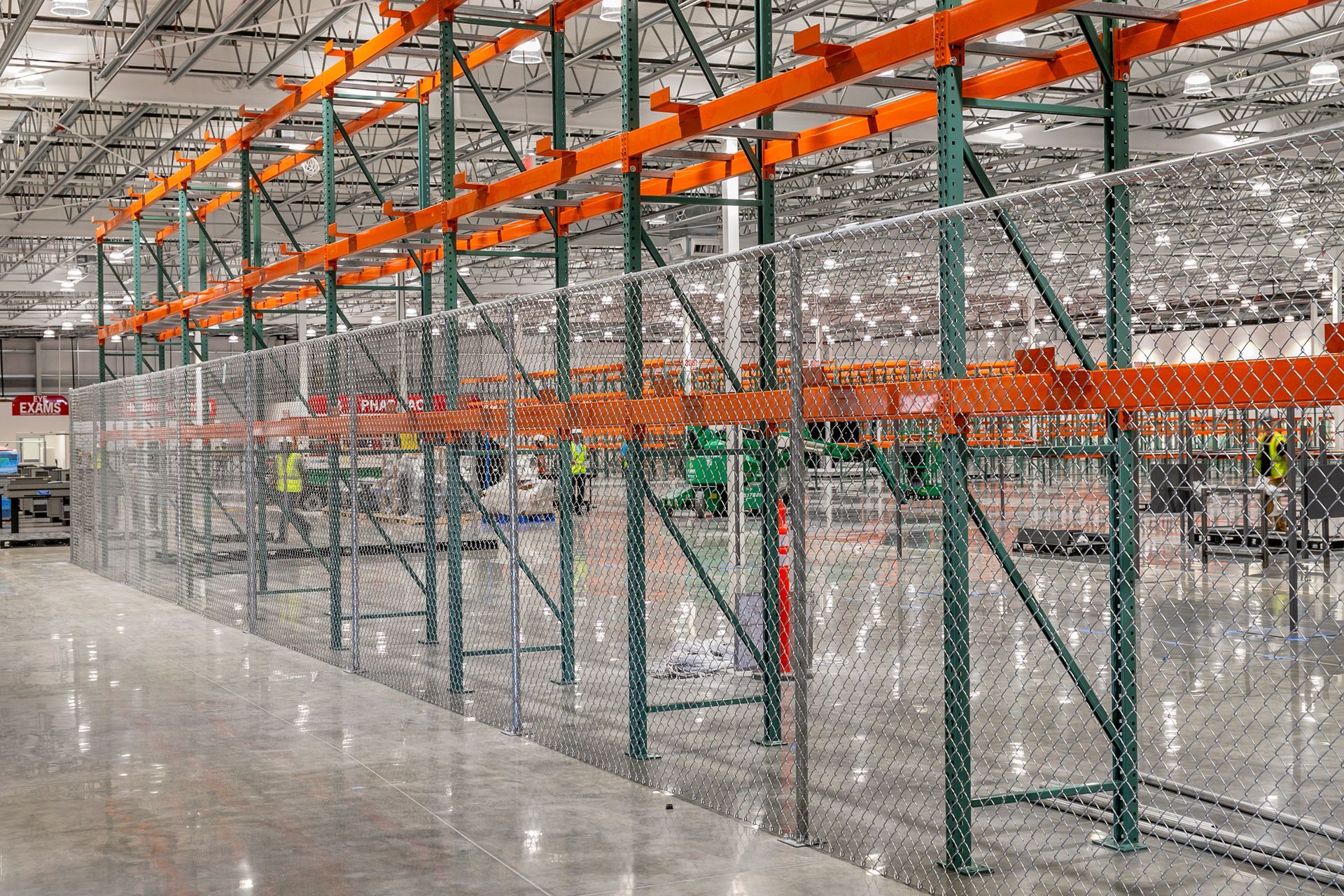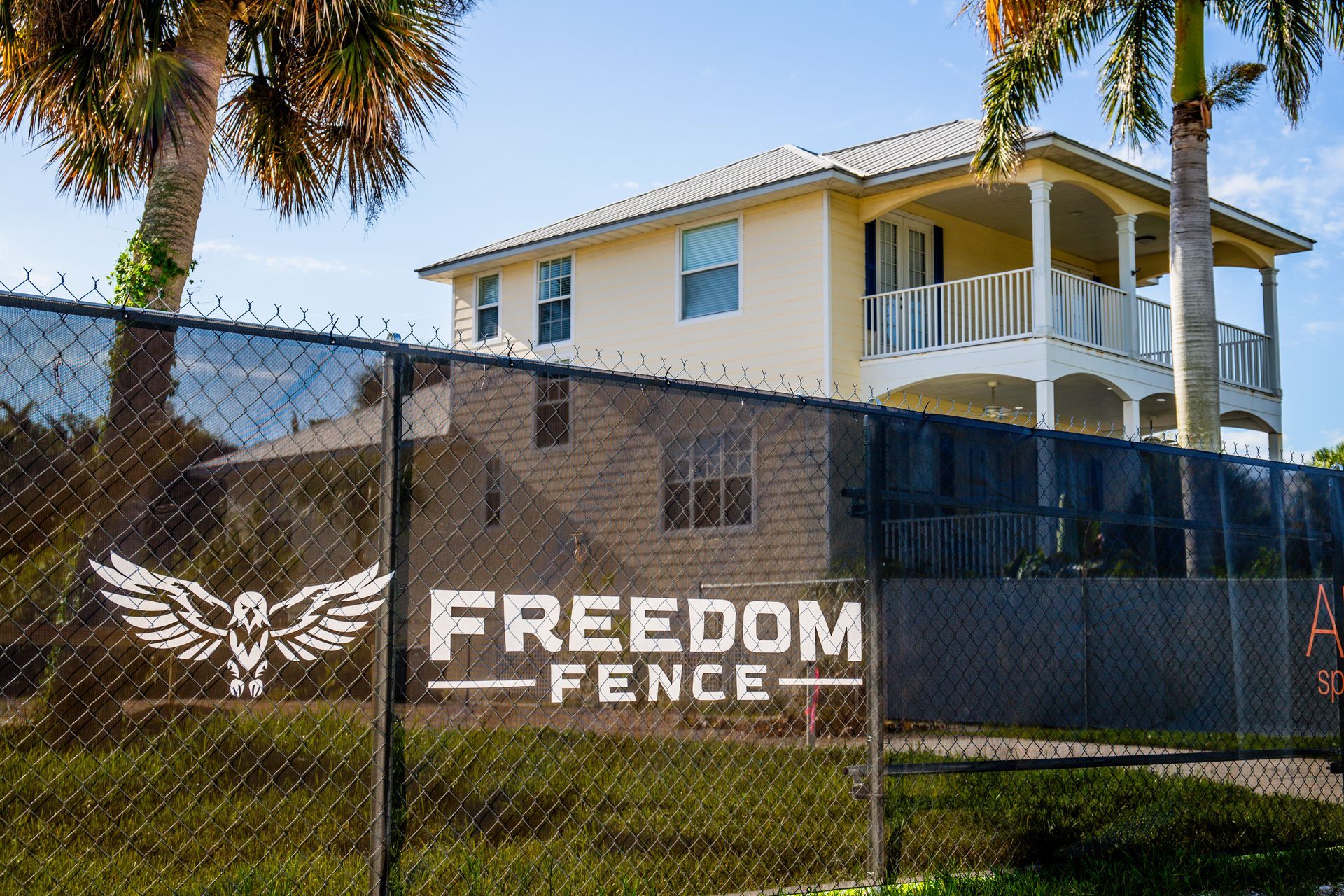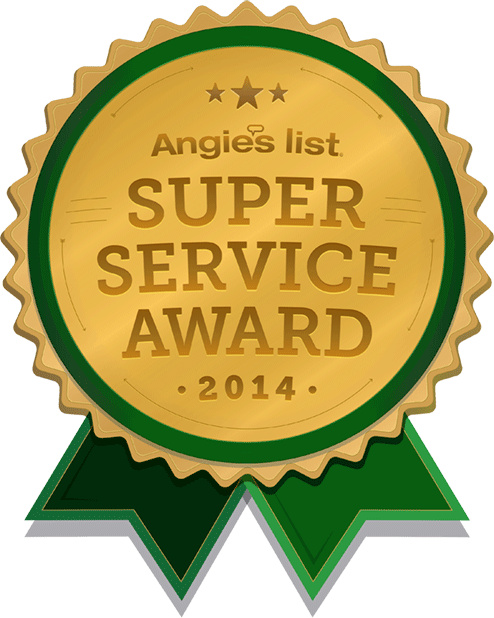REquest an Estimate:
Ensuring Construction Site Safety with Proper Fencing

Construction site safety is paramount, not only to protect the workers but also to ensure the public's well-being and compliance with legal regulations. One of the most critical aspects of site safety is the proper selection and installation of fencing. This article will explore the purpose of a construction site fence, why fencing is essential for construction site safety, the best types of fencing available, temporary fencing options, key regulatory requirements, and practical tips for effective installation and maintenance.
Why is Fencing Essential for Construction Site Safety?
Some of you may ask,
"What is the purpose of a construction site fence?"
Fencing is a fundamental component of construction site safety for several reasons:
Security: Proper fencing acts as the first line of defense against unauthorized access. It helps prevent theft, vandalism, and potential hazards caused by outsiders entering the site.
Public Safety: Fencing ensures that the general public is kept away from potentially dangerous areas, such as open excavations, heavy machinery, or materials that could cause harm.
Access Control: By controlling entry and exit points, fencing helps manage who can enter the site, ensuring that only authorized personnel are allowed in. This reduces the risk of accidents and maintains a secure working environment.
Compliance with Regulations: Many local and national regulations require construction sites to be properly fenced off to ensure safety and prevent accidents. Non-compliance can result in hefty fines and project delays.
Fencing is not just a physical barrier; it’s a critical safety measure that protects both the site and the people around it.

What Are the Best Types of Fencing for Ensuring Safety on Construction Sites?
Choosing the right type of fencing for your construction site depends on several factors, including the size of the site, the level of security needed, and local regulations. Here are the most common types of fencing used on construction sites:
Chain Link Fencing: This is one of the most popular choices for construction sites. Chain link fencing is durable, easy to install, and provides a clear view of the site, which is essential for monitoring and security. It’s also relatively cost-effective, making it a preferred option for many projects.
Hoarding: Hoarding involves solid panels, usually made of wood or metal, that provide privacy and security. This type of fencing is ideal for urban construction sites where maintaining privacy and reducing visual clutter is important. Hoarding also offers excellent protection against dust and debris.
Mesh Fencing: Mesh fencing is lightweight and easy to install, making it a good option for smaller sites or temporary setups. While it doesn’t offer the same level of security as chain link or hoarding, it’s effective for marking boundaries and providing basic protection.
| Fencing Type | Best Use Case | Pros | Cons |
|---|---|---|---|
| Chain Link Fencing | Large Sites, High-Security Needs | Durable, Clear Visibility, Easy to Install | Limited Privacy |
| Hoarding | Urban Sites, Privacy Needs | Provides Privacy, Strong Security | More Expensive, Heavier |
| Mesh Fencing | Small Sites, Temporary Use | Lightweight, Quick Setup | Lower Security, Less Durable |
Each type of fencing offers different benefits, so it’s important to assess your site’s specific needs before making a decision.
What Temporary Fencing Options Are Available for Construction Sites?
Temporary fencing is often necessary for construction sites, especially for short-term projects or when flexible, easy-to-move barriers are needed. Here are some temporary fencing options that are commonly used:
Temporary Construction Fence Panels: These modular panels are easy to set up and take down, making them ideal for sites that require frequent adjustments to the fencing layout. They are sturdy enough to provide security but flexible enough to be relocated as needed.
Temporary Fence Post and Mesh Combinations: For sites that need quick and cost-effective fencing, combining temporary fence posts with mesh fencing is a popular option. This setup is easy to install and move but doesn’t offer the same level of security as more permanent solutions.
Movable Fence Temporary Fence: These fences are designed for maximum mobility and flexibility. Movable fences are ideal for sites where the construction layout frequently changes or where specific areas need to be fenced off temporarily.
Temporary fencing options provide the versatility needed to adapt to changing site conditions while still maintaining safety and security.
What Are the Key Regulatory Requirements for Construction Site Fencing?
Compliance with local and national regulations is crucial when installing fencing on a construction site. These regulations are designed to ensure safety and reduce the risk of accidents. Here are some of the key regulatory requirements you should be aware of:
Minimum Height Requirements: Most regulations specify a minimum height for construction site fencing to ensure it effectively prevents unauthorized access. Typically, this height ranges from 6 to 8 feet, depending on the location and the nature of the site.
Material Specifications: Regulations may also dictate the types of materials that can be used for construction site fencing. For example, some areas require the use of non-combustible materials to reduce the risk of fire.
Access Points and Gates: Fencing regulations often include requirements for access points, including the number, size, and security measures needed for gates and entrances. These access points must be secure and controlled to prevent unauthorized entry.
Visibility and Signage: Fencing must be visible enough to alert the public and workers of the construction site's boundaries. In addition, clear signage indicating potential hazards and site rules is usually required.
Environmental and Noise Considerations: In urban areas, regulations may include provisions for reducing the environmental impact of fencing, such as using soundproof barriers or materials that minimize visual impact.
Ensuring compliance with these regulations is not only a legal requirement but also a critical component of maintaining a safe and secure construction site.
How Can You Effectively Install and Maintain Fencing on Construction Sites?
Proper installation and maintenance of construction site fencing are essential to ensure it remains effective throughout the project. Here are some best practices to follow:
Site Assessment: Before installing any fencing, conduct a thorough assessment of the site. Identify areas that require the most protection, such as equipment storage zones or hazardous work areas.
Quality Materials: Use high-quality materials that are suited to the specific conditions of your site. For example, in areas with high winds, sturdier materials and deeper posts may be necessary to ensure the fencing remains stable.
Professional Installation: While some temporary fencing can be installed by site personnel, more permanent or high-security fencing should be installed by professionals. This ensures that the fencing is properly anchored and secure.
Regular Inspections: Fencing should be inspected regularly for signs of damage or wear. This is especially important after severe weather or other events that could impact the stability of the fencing.
Maintenance Protocols: Establish a maintenance protocol to address any issues with the fencing as soon as they arise. This might include replacing damaged sections, tightening loose fittings, or re-anchoring posts.
By following these guidelines, you can ensure that your construction site fencing remains effective and compliant with safety regulations throughout the duration of the project.
Install Fence For Your Construction Site with Freedom Fence FL
Fencing is a crucial aspect of construction site safety, providing security, controlling access, and ensuring compliance with regulations. By choosing the right type of fencing, understanding regulatory requirements, and following best practices for installation and maintenance, you can protect your site, your workers, and the public. Whether you need temporary solutions or more permanent barriers, proper fencing is an investment in the safety and success of your construction project. Contact us for proper fencing recommendations fro your construction site.
Mon-Fri: 8am-5pm • Sat-Sun: Closed
Financing, Cash, Check & All Major Credit Cards
License: FL CBC Lic. #1263682
4385 Independence Ct,
Sarasota FL 34243
Copyright © 2023 Freedom Fence




